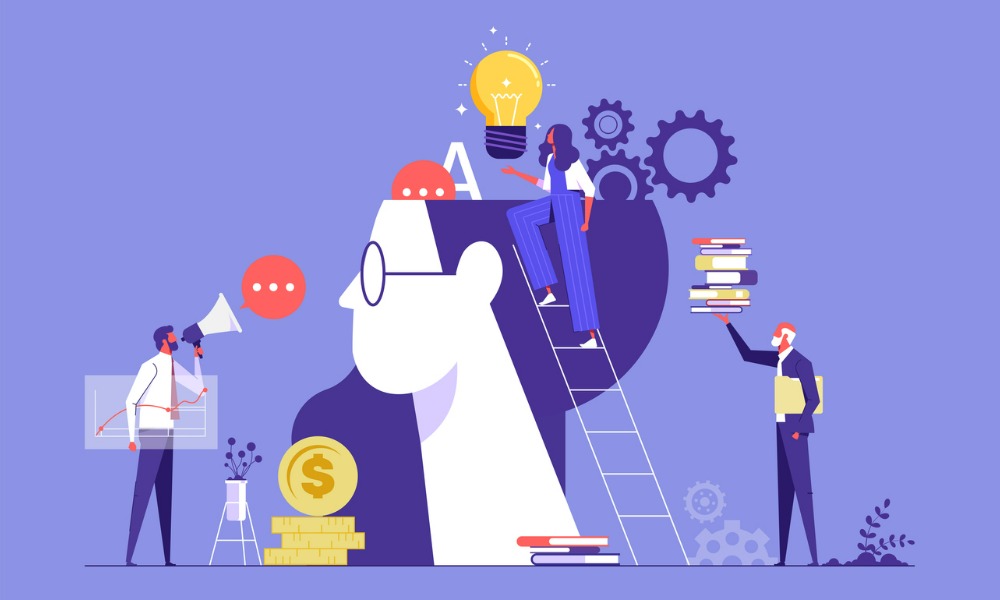
Google learning specialist weighs in on how the pandemic changed upskilling for the better

Building a successful L&D program isn’t like reinventing the wheel – it’s about expanding, honing and evolving the processes you already have in place.
At a recent panel hosted by HRD, we were joined by Anella Bertan, senior learning specialist at Google, Raquel Binder, senior manager, coaching and development at Jobber, and Megan Anderson, senior enterprise account executive at BetterUp, who debated the future of upskilling in a hybrid setting.
And, as Anderson aptly pointed out, learning is a journey – it’s not an end destination.
“I like to think about it in the framework of learning, to doing, to being,” she tells HRD. “I didn’t get into the business of talent in order to insert new facts into people's heads - I got into the business of talent to help people be their best selves. To help them move from knowing a thing into practising a thing into being a fundamentally better version of themselves – because they've incorporated that learning into their day to day.”
Learning and development has changed exponentially over the past few years. One-size-fits-all approaches to upskilling have been replaced by Netflix-type personalization – programs that offer flexible and engaging strategies.
According to a survey by Deloitte, 70% of employees say that on-the-job training and development opportunities are very important to them when considering a new job – with 35% of employees who receive insufficient training leaving their job within the first year. The call for L&D, especially throughout the pandemic, was compounded and catalysed by overnight digitization – with online training becoming a necessity, not a benefit.
This is where the benefits of hybrid models really thrive.
“I’m personally a huge fan of hybrid and distributed learning,” says Binder. “I think you can reach so many more people in more ways, connecting to different learning styles more actively. Whether you’re in person or online, if you don't embrace it, you're going to lag behind. That's where our world is right now.”
$1,299 – the average development cost per employee
And the data’s there to back Binder up. Companies that aren’t investing in L&D are running a huge risk of lagging behind their competitors – something that could spell disaster in the ongoing labour shortage.
According to a report by the Association for Talent Development (ATD), organizations spent an average of $1,299 per employee on L&D in 2020. Additionally, larger organizations tend to spend more on L&D than smaller organizations. Organizations with 10,000 or more employees spent an average of $1,273 per employee on L&D, while companies with fewer than 500 workers spent an average of $867.
It’s big business – especially as AI and algorithm-backed learning continues to thrive. But not all companies were dabbling with hybrid pre-pandemic, and the switch came as quite the disrupter. At Google, Bertan tells HRD, hybrid was a wholly new concept. Pre-pandemic, Googlers were in the office five days a week – so when the stay-at-home mandates hit, it took some adjusting.
“We had to consider how we would work from home,” she says. “How do we interact? We had to accelerate our video conferencing capabilities to be able to facilitate trainings and have effective meetings in-person. That was a really big shock for us to be quite honest. But a lot of good has come out of it. Specifically, a lot of the advancements that we've gotten right now with video conferencing.”
In many ways, the pandemic acted as a catalyst for innovative L&D practices. As Bertan said, the shift from in-person to remote led to unprecedented changes and advancements in HR technology. Data from Gartner found that the pandemic accelerated the adoption of HR technology by several years, with 47% of HR leaders saying they increased their investment in HR technology in 2020.
Specifically regarding L&D, a survey on LinkedIn found that 59% of development professionals said they increased their use of online learning during the pandemic, with 87% of companies adding that they invested in upskilling programs in 2020.
“While I can’t point specifically at the pandemic, I do think that employee expectations of companies have changed significantly and work-life balance is now forefront of everyone's mind,” says Anderson. “Where you were, how you work, what the company can provide for me as an individual - and I think L&D comes as a tool to help connect employees to the company.
“Drive L&D to drive company performance. We have to be more creative than ever and move more quickly than ever now. The world pivoted and stayed that way for a few years. And now, every day, it seems to be changing in terms of people wanting to learn where people want to work, and what skills they need to know to do it.
“I believe their expectations are also on us to help guide them because no one knows what is going to happen tomorrow – and they're going to be expected to show up. All we can do is work together.”
Take a look at our recent L&D event – and future upcoming HRD events – here.